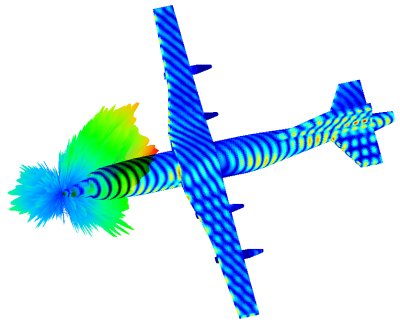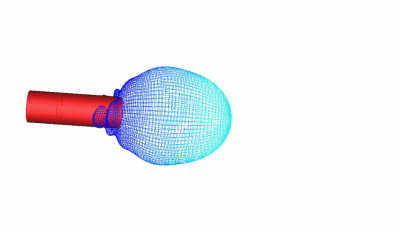-
- Actuators
- Coil Design
- Electromagnetic Brakes & Clutches
- Inductors
- Levitators
- MRI
- Motors
- Alternators and Generators
- Electromagnetic Brakes and Clutches
- Sensors
- Loudspeakers
- Magnetic Encoding
- Relays and Contactors
- Solenoids
- Shielding
- Electromagnets
- Magnetic Bearings
- Magnetic Signatures
- Magnetic Fixtures
- Magnets
- Non Destructive Testing
- Particles
-
- Antenna Radiation Characteristics
- Simulation of an Airplane
- EM Simulation of a Desktop
- EM Compatability and EM Interference
- Cable Junctions and Terminations
- Filters
- Lightning Strikes
- Microwave Circuits
- Microwave Ovens
- MRI
- Near Field Analysis
- Radar Cross Sections
- Radio Frequency Cavities
- Reflector Antennas
- Sensors
- Ultra Wideband Antennas
- Waveguides
- Antennas
RADAR
Monostatic and bistatic radar cross section of an arbitrary shaped perfect electric conducting body or a body with specific dielectric constant, permeability, and finite conductivity can be analyzed using our CAE software SINGULA™ . Closed or open surfaces of finite impedance and dielectric coated surfaces can be included in RCS calculations. A composite body with different material properties can be handled in SINGULA™.

For the problems of Radar Cross Section (scattering problems or open region problems), the integral equation method has more advantages than the FEM or FDTD methods, especially for electrically large structures. SINGULA™ uses the Fast Fourier Transform (FFT) technique to speed up the matrix-vector product, which can overcome the weaknesses of the FEM method when dealing with highly lossy materials.
